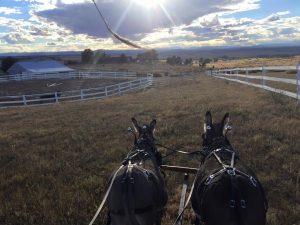
Following on to my previous post about strong style pairing for testing, I must say that this takes practice! And, I think maybe strong style pairing may not be the best way approach for all pairing situations, but I am learning more benefits of it.
I had a golden opportunity to pair with my awesome developer teammate Glen Ivey to write some exploratory testing charters for a critical project we have underway. We agreed to try strong style pairing. After a couple of hours doing this, we weren’t sure it was the best approach. It kind of felt like one of us (ok, mainly me) dictating to the other what text to type. Later on, when I paired with my tester teammate Chad, we had a similar experience. I had the context for what should go in the charter, and I was just telling him what to type. Hmmm.
And when opportunities where strong style pairing would really help presented themselves, something I knew about and Glen didn’t, I screwed up and took control of the keyboard. I should have let him take control and guided him on what to do so he could discover the features for himself. That would have made a good learning experience. Doing something is a better way to learn than watching someone else do it. Creating a new habit takes a lot of practice and discipline, so I have to keep working at this.
Glen was much better at having me take the keyboard to walk through some of the production and test code, and that activity helped us think of a lot of exploratory testing charters that I’d never have thought of on my own. For me at that point, the strong style pairing delivered a big benefit.
Since we were pairing on charters, we naturally referred to Elisabeth Hendrickson’s Explore It! book. Glen focused on what resources we’d use for each charter. Not only did that get us thinking more deeply about how to scope charters, it prompted us to put in helpful information for whoever happens to pick up any given charter.
Brain in my fingertips
So much of what I know resides only in my fingertips, and that can make strong style pairing a challenge. Today, Chad and I were pairing to explore a GitHub integration with our product. I totally told him the wrong syntax to commit a change. After we got an error, I had to imagine typing it myself to get it right. I think that says something about how brains work. But, thanks to the strong style pairing, he also had the opportunity to try out areas of our app he hadn’t used before, and it was much more useful for him to have control of the keyboard to learn and practice. Overall, we confirmed expected behavior for some features, and found a couple of potential issues in others, and I think we did that faster than if we hadn’t been pairing.
Pairing can feel hard
I’m going to keep practicing strong style pairing. These past few days I’ve been exploring areas of our app that I’ve largely forgotten. It feels easier, and less stressful, to poke around on my own. And I might be right about that in some cases. But I want to take advantage of the opportunities to get a fresh set of eyes on these areas, while at the same time helping a teammate learn about those areas. I believe that pairing for testing helps us improve our ability to build quality in.
It’s so exciting and rewarding to pair test with fellow testers and developers. I’d love to hear your own pair testing stories.



3 comments on “More “Strong Style Pairing” Experiences”
“I should have let him take control and guided him on what to do so he could discover the features for himself. That would have made a good learning experience.”
I had a similar experience in the Software Testing World Cup – it’s really hard to step back, and let someone else learn, including make mistakes. I’m getting better at it though, you have to just give up the reins. Part of being able to do that is to realise that the pairing session is as much about learning as finding problems (for me).
Interesting experience just this minute. Our web page needs to support Chinese language with Chinese content.
What do you do when you have people who speak Chinese, but aren’t testers. And testers who don’t speak Chinese?
You pair! As a tester you point out what the page should say, and buttons should do. They confirm if they’re seeing that on screen.
Very cool! And another great example of potential benefits of pairing!